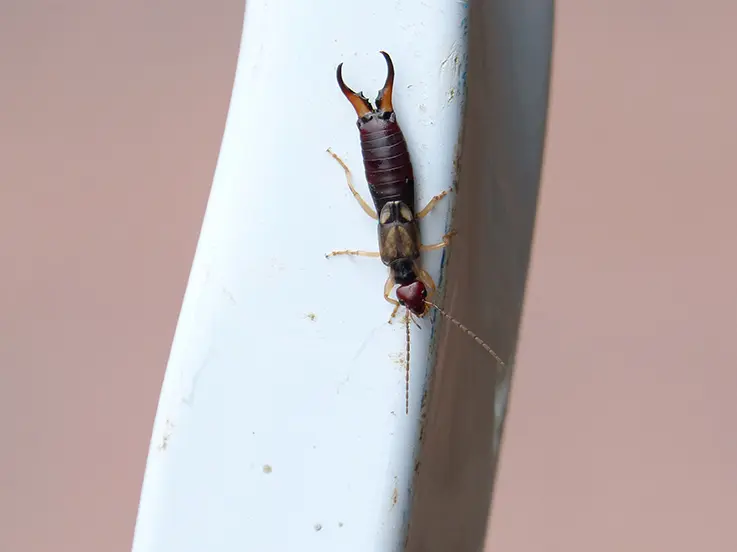There are 22 kinds of earwigs present in the U.S. and only around 4 or 5 that will invade homes or businesses. The European earwig is the most prevalent of earwig pests in Pennsylvania. Despite their name, which means “ear creature,” earwigs don’t bother with ears. They were once rumored to crawl into human ears, but that’s only a story. Earwigs don’t fly very often but they do travel on luggage, in newspaper bundles, on cut flowers, and hitchhiking on cars.
| Appearance | Earwigs are usually a dark reddish-brown color with yellow-brown legs. They have forceps. The forceps on males are more curved and pincer-like; on females they’re straight-sided. |
| Length | Approximately 5/8” |
| Where You Can Find Them Inside | Almost anywhere |
| Food Sources | They’ll eat almost any plant and most household pantry items like bread, cookies, and flour. |
| Extra Facts | Earwigs are primarily active at night. They spend their days hiding in cracks and crevices. |
Complaints
Despite their penchant for eating plants, earwigs don’t pose much of a threat to your garden or crops. They will, however, invade everywhere when they enter homes. Earwigs have been known to hang out in food, in furniture, in clothing, and in bedding. Because they can hide in cracks, they can be hard to keep out even with screens or other barriers in place.
Solutions
To prevent an earwig infestation, remove potential nesting places from around your house. Keep piles of leaves and clipped grass away. Fix any drainage issues or broken irrigation systems. Nesting females will look for moist, dark areas to raise their young, so keeping things dry and light will keep earwigs from staying.
You may be able to remove earwigs with traps in your landscaping. There are also some chemical sprays that are effective. A pest control specialist, like Wildlife Enterprises, LLC, can help.
Dan Lynch is a Certified Commercial Pesticide Applicator with licensing from the Pennsylvania Department of Agriculture. His permitted categories include household and health related pests, wood destroying pests, and public health vertebrate and invertebrate pests.

